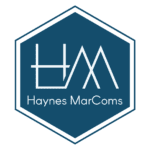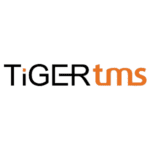The merger between MarriottÊand Starwood might have been completed in late September 2016, but that was just the beginning.ÊSince that time, owners and their asset managersÊhave awaited confirmation that related merger expenses would be “net neutral,”Êas initially promised.
Then, in March 2017, a communication came down the pike detailing ÒProject Tetris,” whichÊrefers to Marriott’s planned integration of Starwood properties into Marriott’s finance model. It isÊone of many expected initiatives directed specifically at Starwood-branded hotel owners.Ê
Project Tetris outlined the transition plan and savings anticipated as a result of leveraging Marriott’s size and scale to improve negotiated merchant contracts and achieve incremental savings through increased buying power. In addition to economies of scale, efficiencies are expected through the implementation of updated systems and processes. These savings will be dependent on product, marketÊand the hotel’s purchasing power.
As an asset manager representing several owners of Starwood-branded hotels, we set out to examine the impact of Project Tetris on each of the properties within our own portfolio. The level of impact varied, but, in all cases, properties benefited and experienced netÊsavings. We stress that this is ÒnetÓ savings, as there are components of Project Tetris that will also result in incremental costs.
The following provides a summary of the program, including perceived savings, expenses and roll-out of Project Tetris, applied to a fictitious 400-key,Êfull-service Starwood hotel in an urban market.
Incremental savings
Project Tetris aims at reducing annual finance-related expenses by $500-$1,000 per key depending on product, market and spending power. These savings will be the result of transitioning legacy hotel systems to newer, more efficient platforms (for example, StarTime to ATLAS), as well as through consolidation of remote finance offices.
Marriott suggests that by rolling out these newer and more efficient tools, operators will be able to eliminate ÒredundantÓ technology, services, improve A/R and A/P functions, while also increasing efficiencies at the property-level. This, in turn, will provide an opportunity to adjust existing staffing models. In addition, Marriott’s size and scale will reportedly be leveraged to improve commission terms in merchant contracts (credit-card processing for example), and drive increased rebates through the implementation of Marriott’s Purchasing Card programs.
Savings for this 400-key sample hotel are estimated to be between $200,000 and $400,000Êon an annual basis.
Incremental expenses
Integration to the Marriott Business Services (ÒMBSÓ) Finance Platform (now Accenture Hospitality Services or ÒAHSÓ) comes with annual and one-time expenses. Initial information provided by Marriott corporate places the expense to transition legacy hotels from the Starwood SAP Platform to AHS at between $250 and $500 per key, depending on the hotel’s age, productÊand systems currently in place. These expenses have been categorized as ÒOne-timeÓ Expenses and Delivery Costs.
1.ÊÒOne-timeÓ expenses that will be implemented over a five-year period are calculated on a per-available-room basis and include expenses related to: project management; system configuration, integration and testing; data conversion; implementation and training; third-party licensing fees; and severance.
However, in addition to the Òone-timeÓ expenses mentioned above, additional OS&E items, such as the purchase of new employee time-clocks, will be needed to complete the transition. While the first category of Òone timeÓ expenses will be allocated over a five-year period, the additionally required OS&E items will be treated as an owner’s capital expense, and is therefore not factored in the analysis provided by Marriott.
2.ÊDelivery costs associated with the transition to AHS are ongoing technology and labor support related to delivering the business services.
Incremental expenses required to transition this 400-key sample hotel is estimated at between $100K and $200K per year over a five-year period. These expenses do not include one-time capital expense items.
Annual savings and implementation
Marriott’s rollout of Project Tetris is projected to be a net benefit to owners. With implementation scheduled for April 2017, full-year savings are expected to be achieved in 2018. However, at this time, corporate guidance has not yet been provided as to when these savings will be reflected in 2017 property reforecasts.
Projected annual net incremental savings for this 400-key sample hotel is estimated at between $100,000Êand $200,000Êper year once integration expenses ($100K-$200K) have been deducted from the projected annual savings ($200K-$400K).
Owner implications
What implications does Project Tetris have on owners?
Owners, or their asset managers, should:Ê
Get out in front of the integration by projecting the impact to your specific hotel(s). Discuss questions, and/or perceived issues with your property and regional teams.
Monitor the biggest risk: Òone-timeÓ expenses. It is still unclear at this time how much, or when these expenses will hit the P&L. Owners and asset managers should request detailed reforecasts highlighting anticipated charges.
Request revised staffing plans from the operating team to better understand the labor savings component (and ensure that savings are actually realized!).
Establish a system for isolating and monitoring on-going expense and cost savings.
Have legal counsel review management and franchise license agreements for terms related to reimbursable expenses, particularly defined caps on centralized service fees.
Understand that savings will be dependent upon prior purchasing programs currently employed at the hotel, and the delta between the ÒoldÓ and Ònew.ÓÊFor larger, convention properties, it is not unlikely that the hotel has already negotiated preferred pricing, therefore savings from the integration may be less than anticipated.
CHMWarnick takes the Marriott analysis at face value. There are clear opportunities for property-level savings due to increased efficiencies through economies of scale; however, specific line items (bad debt, in particular), are subjective and will require further evaluation.
As with any brand initiative, it is imperative that owners and their asset managersÊare well educated and informed so that one can be out in front of these changes to protect their interest and asset value. Ê
By Andrew Leber (SVP) and Sean Kreiman (Senior Associate) from Hotel Management. Andrew and Sean are withÊCHMWarnick, a provider of hotel asset management and owner advisory services. The company asset manages over 65 hotels comprising approximately 27,000 rooms valued at over $15 billion.































